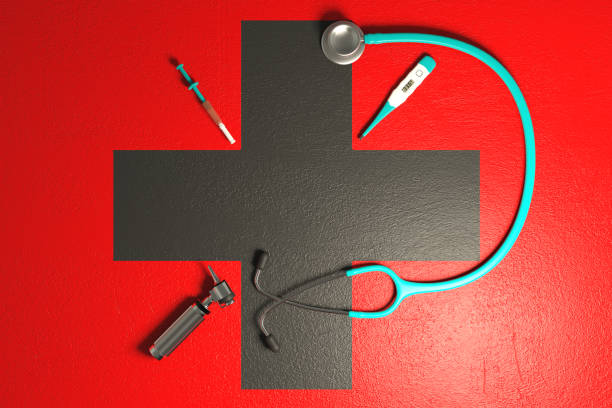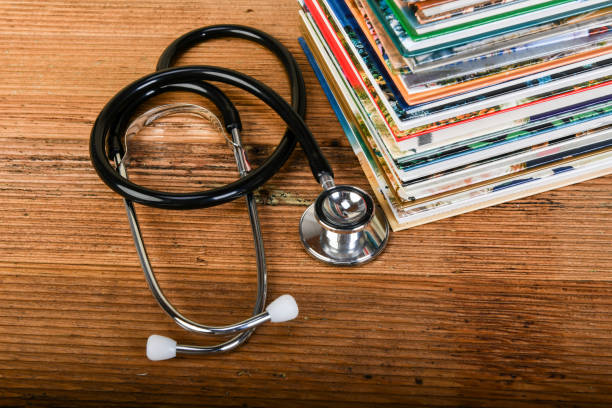The stethoscope is more than a simple medical device—it’s a game-changer in healthcare. Over the years, this humble tool has played a major role in many famous medical breakthroughs, revolutionizing how doctors diagnose and treat patients.
Its invention in 1816 by René Laennec marked a turning point in medical history, leading to improved care and lifesaving advancements.
Who Invented the Stethoscope in 1816?
René Laennec, a French physician, invented the stethoscope in 1816. At the time, Laennec faced challenges examining patients, especially women, as direct contact was uncomfortable.
He rolled a sheet of paper into a tube and used it to listen to a patient’s heartbeat. This simple idea led to the creation of the first stethoscope.
How Did the Stethoscope Change Medicine?
The invention of the stethoscope revolutionized medicine by introducing a reliable way to “listen” to the body. Before its invention, doctors relied on basic external observations and limited tools to diagnose internal health issues.

René Laennec’s simple innovation in 1816 allowed physicians to hear sounds from the heart, lungs, and other organs for the first time, forever changing how medical diagnoses were made.
1. Improved Diagnosis Accuracy
The stethoscope made it possible to detect conditions like heart murmurs, lung infections, and abnormal rhythms with much greater accuracy. This was especially critical for diseases that were difficult to identify without invasive procedures.
2. Shift to Evidence-Based Medicine
The stethoscope introduced the concept of evidence-based diagnosis, where doctors relied on sound patterns to confirm their suspicions. This method moved medicine away from guesswork and improved patient outcomes.
3. Early Detection of Diseases
Doctors could now diagnose life-threatening conditions, like pneumonia or heart valve diseases, at an early stage. This early detection allowed for quicker interventions and saved countless lives.
4. Revolutionized Patient Care
By enabling doctors to monitor heartbeats and breathing during routine checkups, the stethoscope became an essential tool in preventative medicine. It allowed for continuous monitoring of health conditions without requiring complex or invasive tests.
5. Enhanced Medical Education
The stethoscope became a critical teaching tool in medical schools. Students learned to recognize specific sounds associated with different diseases, improving their diagnostic skills and ensuring consistent standards of care.
6. Laid the Foundation for Modern Devices
The stethoscope inspired the creation of more advanced diagnostic tools, such as electrocardiograms (ECGs) and imaging devices. Its influence continues to shape medical technology today.
In essence, the stethoscope not only transformed medical practices but also laid the groundwork for modern diagnostic medicine. It remains a symbol of the physician’s role in carefully listening to and understanding their patients.
Famous Medical Breakthroughs Linked to Stethoscopes
The stethoscope has been at the heart of many groundbreaking medical discoveries. By allowing doctors to hear and interpret internal body sounds, it has played a crucial role in diagnosing diseases, improving treatments, and advancing medical science. Below are some of the most notable medical breakthroughs linked to the use of stethoscopes.
1. Identification of Heart Murmurs
The stethoscope enabled doctors to detect abnormal heart sounds, known as murmurs. These sounds often indicate issues with the heart valves, such as stenosis (narrowing) or regurgitation (leakage).
Early detection of these conditions significantly improved treatments and prevented severe complications like heart failure.
2. Diagnosis of Tuberculosis
During the 19th century, tuberculosis (TB) was a leading cause of death. Stethoscopes allow physicians to hear abnormal lung sounds, such as crackles or wheezing, which are associated with TB infections. This breakthrough enabled quicker diagnoses and better management of this deadly disease.
3. Advances in Pediatric Medicine
Specially designed pediatric stethoscopes helped revolutionize the care of children and infants. Doctors could detect conditions like congenital heart defects or respiratory infections early, ensuring timely treatment and improved survival rates for young patients.
4. Development of Emergency Medicine
Stethoscopes became indispensable tools in emergency care. Physicians use them to quickly assess critical conditions such as collapsed lungs, irregular heartbeats, or fluid in the lungs. These rapid evaluations help prioritize treatment and save lives in urgent situations.
5. Better Understanding of Respiratory Diseases
Stethoscopes allowed doctors to study and diagnose respiratory diseases, such as asthma, bronchitis, and pneumonia. By listening to abnormal breathing patterns, they could provide targeted treatments, improving patient outcomes.

6. Improved Management of Pregnancy
Midwives and obstetricians began using stethoscopes to monitor fetal heartbeats, ensuring the well-being of both mother and baby during pregnancy. This practice paved the way for modern prenatal care and fetal monitoring technologies.
7. Modern Cardiology
The stethoscope played a central role in the development of cardiology as a medical specialty. By studying the heart’s rhythms and sounds, doctors gained a deeper understanding of conditions like arrhythmias, heart failure, and valve diseases.
8. Contribution to Preventive Medicine
Routine checkups with stethoscopes made preventive care more effective. Physicians could detect abnormalities early, even in asymptomatic patients, reducing the risk of severe illnesses.
9. Foundation for Digital Diagnostics
The stethoscope laid the groundwork for modern diagnostic tools. For example, advancements like electronic stethoscopes and AI-assisted analysis stemmed from the same principle of listening to and interpreting body sounds.
10. Support in Pandemic Control
During outbreaks of respiratory diseases, including COVID-19, stethoscopes helped doctors identify lung abnormalities linked to infections. This ability to quickly detect respiratory issues was vital for triaging and treating patients during health crises.
Stethoscope Diagram and Evolution
Over the years, stethoscope designs have improved dramatically. Modern stethoscopes now include electronic and digital versions that can record and amplify sounds. Some advanced models even integrate artificial intelligence to analyze heart and lung sounds automatically.
A Comparison of Traditional vs. Digital Stethoscopes
| Feature | Traditional Stethoscope | Digital Stethoscope |
| Sound Quality | Relies on manual listening. | Amplifies and records sounds. |
| Portability | Lightweight and easy to carry. | Slightly heavier due to tech. |
| Functionality | Basic listening capabilities. | Includes sound recording and analysis. |
| Price | Affordable ($20-$100). | Expensive ($200-$500). |
Stethoscope Prices
Stethoscopes come in a wide price range, depending on their features and quality. Here’s an overview:
- Basic models: $20-$50 (ideal for students or general use).
- Mid-range models: $100-$200 (better sound quality and durability).
- Advanced digital models: $200-$500 (used by specialists).
If you’re considering buying a stethoscope, think about your specific needs.
Stethoscopes and the Future of Medicine
Today, the stethoscope continues to evolve. Newer models incorporate AI and digital technologies to provide more accurate diagnostics. For example, researchers are developing “smart stethoscopes” that can connect to mobile apps, making healthcare more accessible and efficient. Despite these advancements, the basic principles behind Laennec’s invention remain the same.
Conclusion
The role of stethoscopes in famous medical breakthroughs cannot be overstated. From René Laennec’s first invention to its modern digital forms, this tool has revolutionized how doctors diagnose and treat illnesses. Whether it’s detecting heart murmurs, monitoring fetal health, or improving emergency care, the stethoscope remains at the heart of medicine.
If you’re curious about its uses, parts, or even the stethoscope diagram, this simple yet powerful device continues to shape the future of healthcare.


